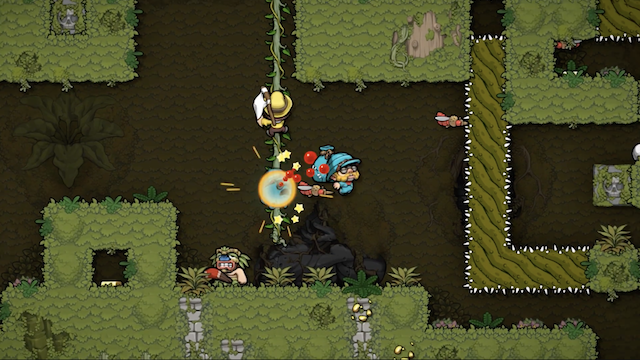

Your main interactions are jumping, grabbing, throwing, and the ability to attack enemies and smash breakable objects with a pitifully short whip.Īlso like before, most of the game’s complexity lies in the enemies, traps and objects that populate the environment, all of which are subject to systems that are designed upon universal rules. The base controls are simple and easy to comprehend. Entering into a mine on the Moon’s surface, you then embark on an ever-descending journey through randomly-generated levels that start off harder than Eddie Hall’s bedsprings and gets more challenging from there.Īt a basic level, the game looks and plays exactly like the first one.

Spelunky 2’s premise is “The same as the first one, only set on the Moon.” You can play as several characters in the adventure, but the canonical one is Ana, daughter of the original game’s protagonist whose name I can’t remember.

Or at least it would be, were all these wonderful systems slightly less laser-focussed on killing you. It’s a wonderful thing to watch in motion. More enemies, more traps, more gadgets, more ways to be surprised and wrong-footed and hoisted upon your own petard, more ways to be brutalised by an entirely logical and yet equally unpredictable arrangement of systems. The sequel’s main goal is to add more of this stuff. It’s these mechanics which made the original Spelunky one of the most celebrated games of its day, one of several titles that kickstarted the modern indie game scene. That would be its elaborate, clockwork mechanics that lend every new run the potential to surprise like a marathon across a glacier. Discussion of Spelunky often tends to revolve around its difficulty, which is unfortunate because the game’s giant-gobstopper levels of toughness really isn’t what makes the game exceptional.


 0 kommentar(er)
0 kommentar(er)
